To trace the journey and adaptation of the Kashmir shawls across the world through surviving examples both in The Zay Collection and in other sources part one covered its unique features, the facts, figures and legends about its appropriation in Europe, identifiable differences and similarities between its European counterparts based on their region of origin.
Wrapped in Social Rank and Scandal
It is interesting how the earliest recorded use of the shawl in Europe was a symbol of both scandal and social status, specifically for the “nouveau riche”. By the 1770s, Europeans, especially the British merchants – who apart from the few great and wealthy like the directors of the Bank of England – were importing these shawls, sometimes as gifts. This was particularly true for the soldiers of the East India Company which was distinct from the soldiers of the British Army. The difference in their military status was evident on home soil.
A portrait of Captain John Foote, a soldier in the British East India Company, painted by Sir Joshua Reynolds between c. 1761-65 is believed to be one of the earliest visual records of a European wearing a shawl. In the portrait, the shawl is tied around his waist like a belt, a style that was typical for men of rank in India. John Foote is depicted as an Indian nabob (Hisdustani: nawab a term often used to refer to the men of the royal families in India.) This term in Britain became synonymous for men who had returned from the East after making a fortune. With a society that preferred a good portrait especially those who were interested in showing off their image and newfound wealth, historians interpret the portrait of Captain Foote as an attempt to elevate himself and gain acceptance into the elite British society. The luxurious Indian ensemble completed with the shawl was probably gifted to him by a true nawab which he was eager to show off as well.
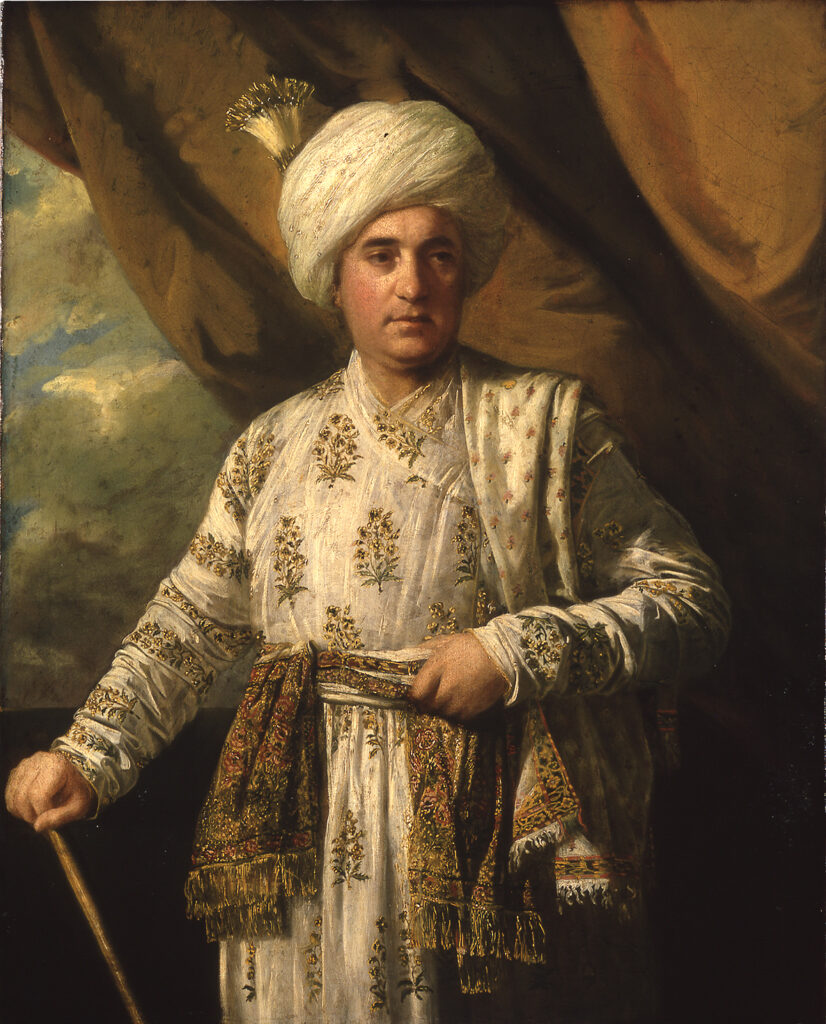
Portrait of Captain John Foote of British East India Company by Sir Joshua Reynolds, c. 1761-65; Acc No- YORAG 216; Source- York Museums Trust, Source
Another portrait by Sir Reynolds is that of Mrs. Horton, who was known for her scandalous relationships with the political elite. Also draped in a turban and shawl, this portrait prompted experts in visual culture to discuss the shawl’s symbolism with the exotic and promiscuous East and its imagined harems.
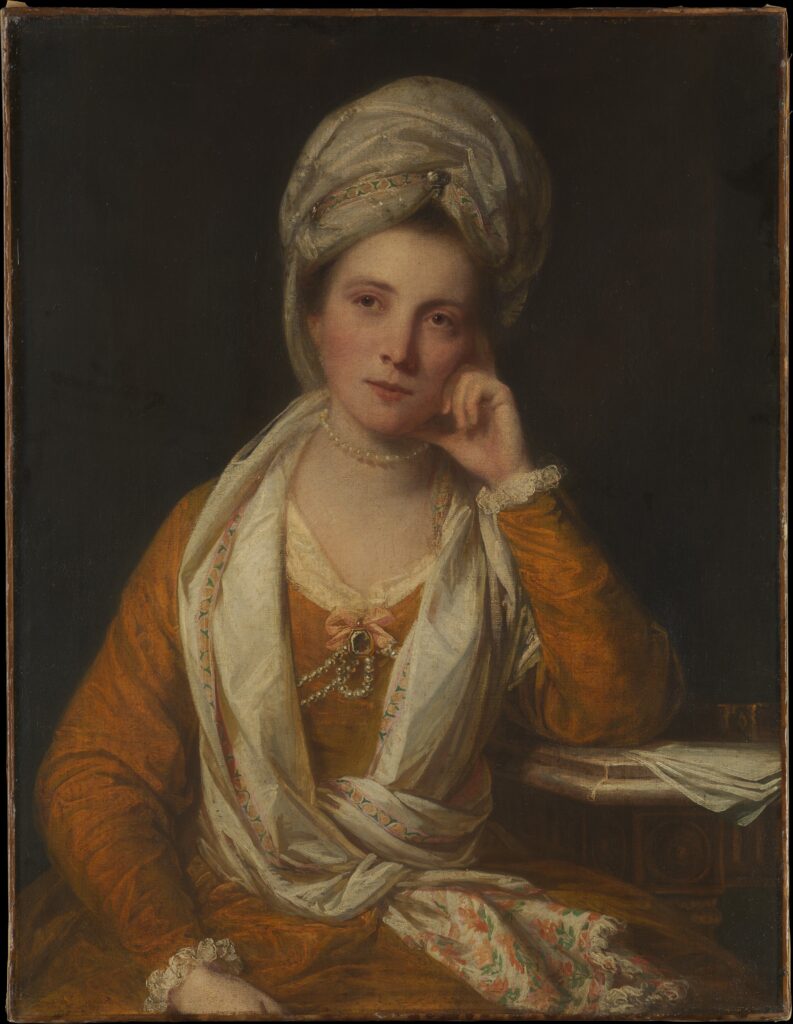
Portrait of Mrs Horton Later Viscountess Maynard by Sir Joshua Reynolds, c. 1767-69; Acc No: 45.59.3; Source: Fletcher Fund, 1945, The Metropolitan Museum of Art, Source
Know Your Shawls (KYS)
The first half of the 19th century is a testament to a range of changes in the silhouettes of women’s dress in Europe. British women in the Regency era often flaunted a higher waistline with flowing skirts and bodices detailing pintucks and wide puff sleeves. Large shawls often termed as “Long shawls” thus became a perfect accessory to balance such silhouettes resulting in the inclusion of at least one such shawl in the wedding trousseau of every lady from the aristocracy. This gave rise to the term “Kirking shawl” especially in Scotland as they were worn to the kirk or church on the first Sunday after the wedding and then again to the christenings of children.
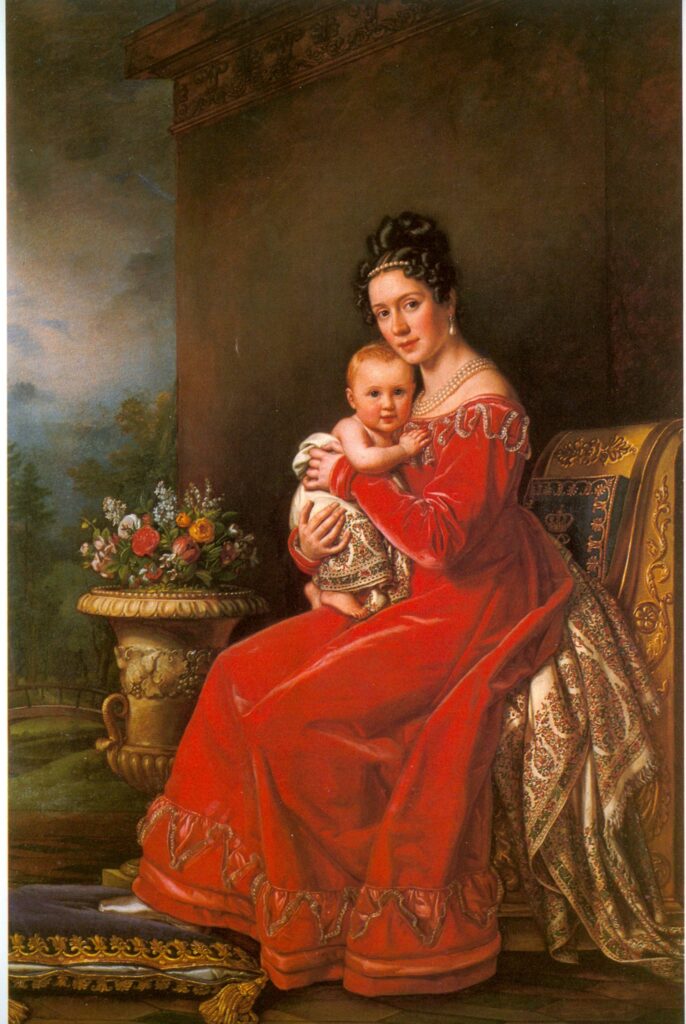
Königin Pauline Württemberg wearing a Kashmir Paisley Shawl by Joseph Karl Stieler, c. 1825; Private Collection: Anonymous
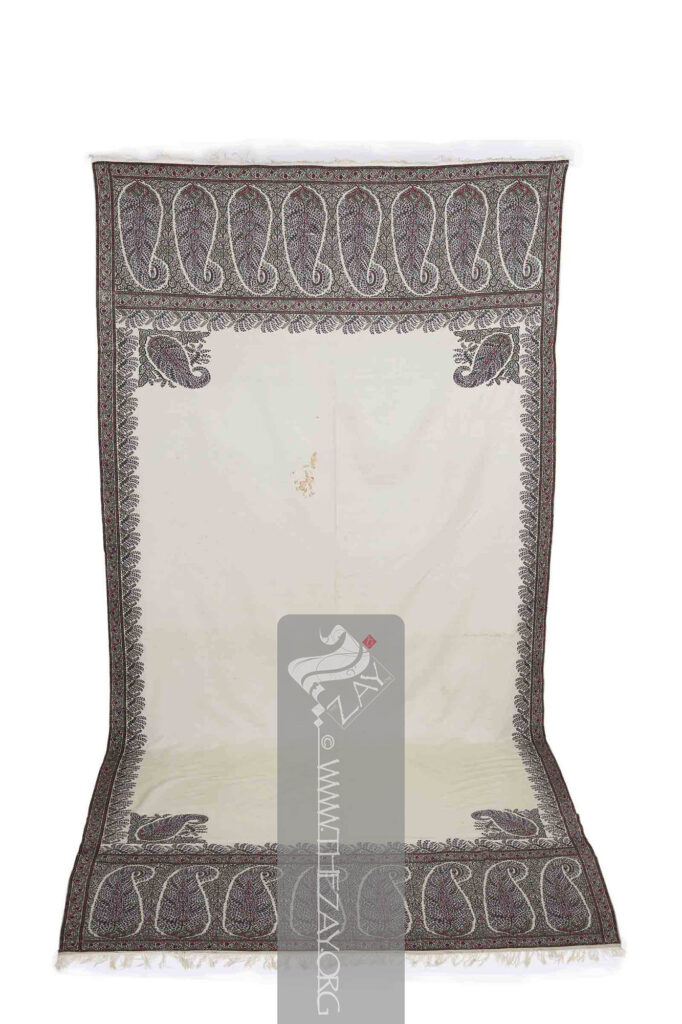
A Kirking shawl; “An Ivory wool long shawl”, Paisley c. 1835; Acc No: ZI2020.500776 EUROPE; Source: The Zay Initiative
By the 1850s, and with the widening of skirts and crinoline frames, the use of shawls became even more popular. A new type of shawl was designed for Victorian women to drape around their necks and shoulders, with the ends turned up to create a collar-like effect. Popularly known as the Turnover shawl, they were embellished on both sides at one corner or all over so that they could be folded diagonally into a triangle for additional warmth. These shawls were made from fine silk or wool and typically featured embroidered embellishments. Long shawls were also often redesigned into turnover shawls thus making them unique and distinct from the newly manufactured ones.
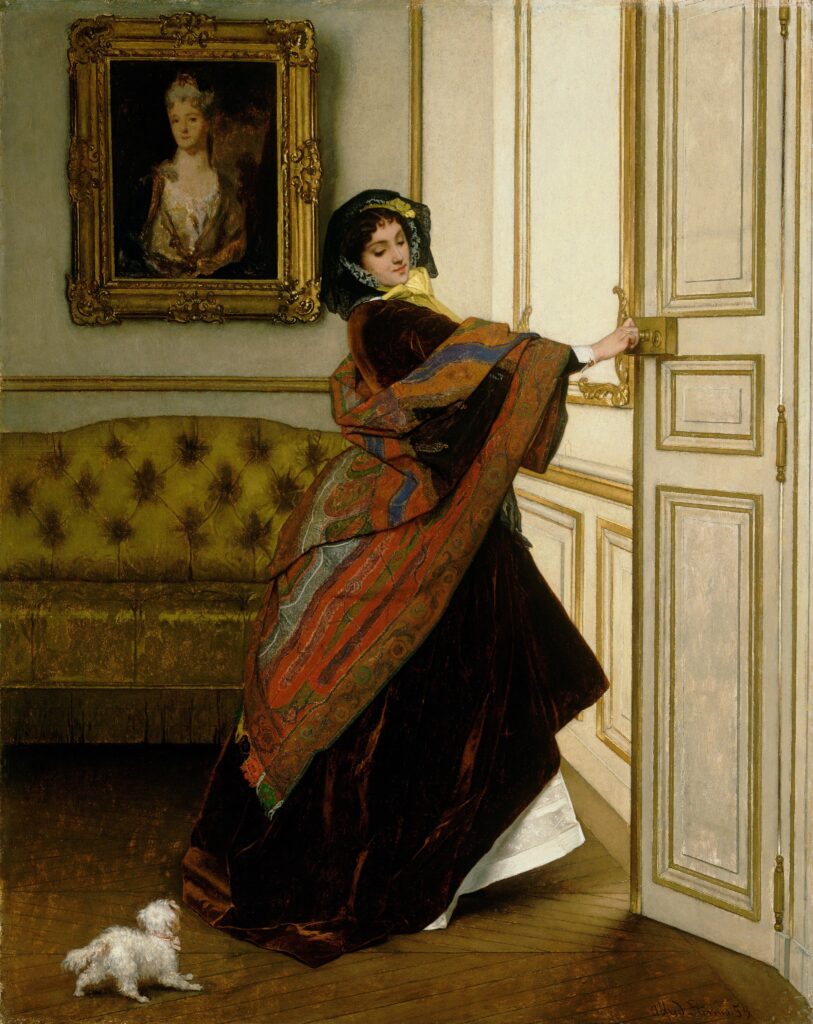
Departing for the Promenade (Will You Go Out with Me, Fido?) by Alfred Émile Léopold Stevens, France, c. 1859; Acc No: W1893-1-106; Source: Philadelphia Museum of Art, Source
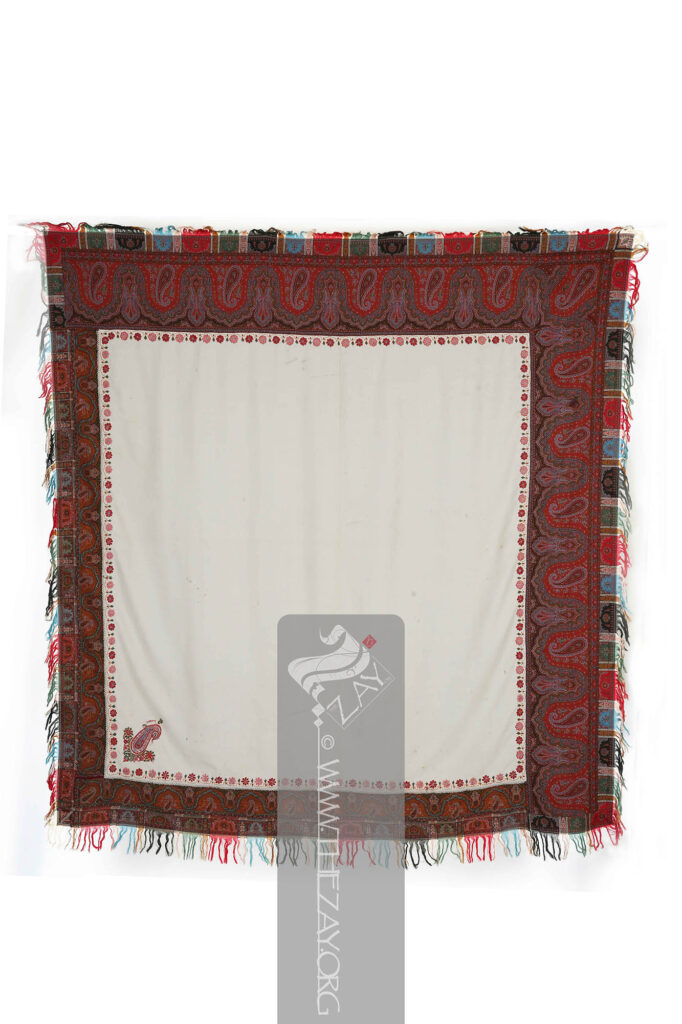
A Turnover shawl, “Ivory base shawl”, Paisley, c. 1850-60; Acc No: ZI2020.500779EUROPE; Source: The Zay Initiative
Another type of shawl known as the Moon shawl was also quite popular. This shawl was copied from the luxurious hand-woven shawls of 17th century Kashmir locally known as chandar and inspired by the 16th century carpets from Ottoman Egypt. These shawls were highly valued for their beauty and craftsmanship and were considered an important cultural symbol of Kashmiri heritage.
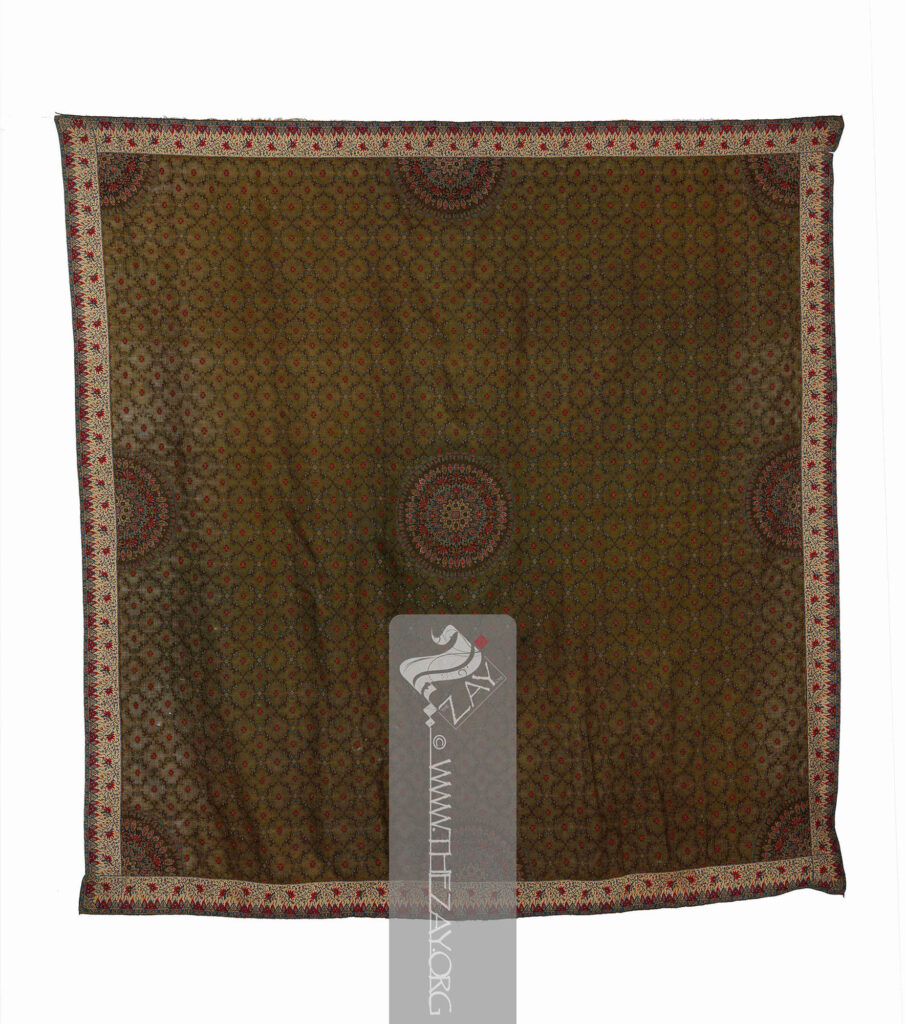
A Moon shawl, “Olive green silk and wool shawl”, Norwich, c. 1820-30; Acc No: ZI2020.500887EUROPE; Source: The Zay Initiative
By the late 19th century, the English East India Company had a firm hold on India. After nearly a century, it had successfully turned India into a British colony. At the same time, the Industrial Revolution was in full swing, sparking numerous inventions and discoveries. Amid this, Prince Albert organised an event – The Great Exhibition of 1851. This was designed to boost international cooperation and improve education and commerce. The venue was London’s Crystal Palace. It drew a massive crowd, with around six million attendees.
It was at The Great Exhibition that the “Delhi_Stole” finally made its grand entrance and was introduced to the greater European populace. Originally sashes or waistbands for men in the Indian subcontinent and locally called kamarband, these became popular first amongst the British soldiers of the East India Company. Their Indian counterparts had often sported them. After the Great Exhibition, these pieces became in vogue amongst women as they could easily pair them with tight-bodice jackets. Often featuring fine embroidery in silk floss or resham these scarves or stoles were exclusively exported to Europe from India after its demands peaked, unlike the Kashmir shawls.
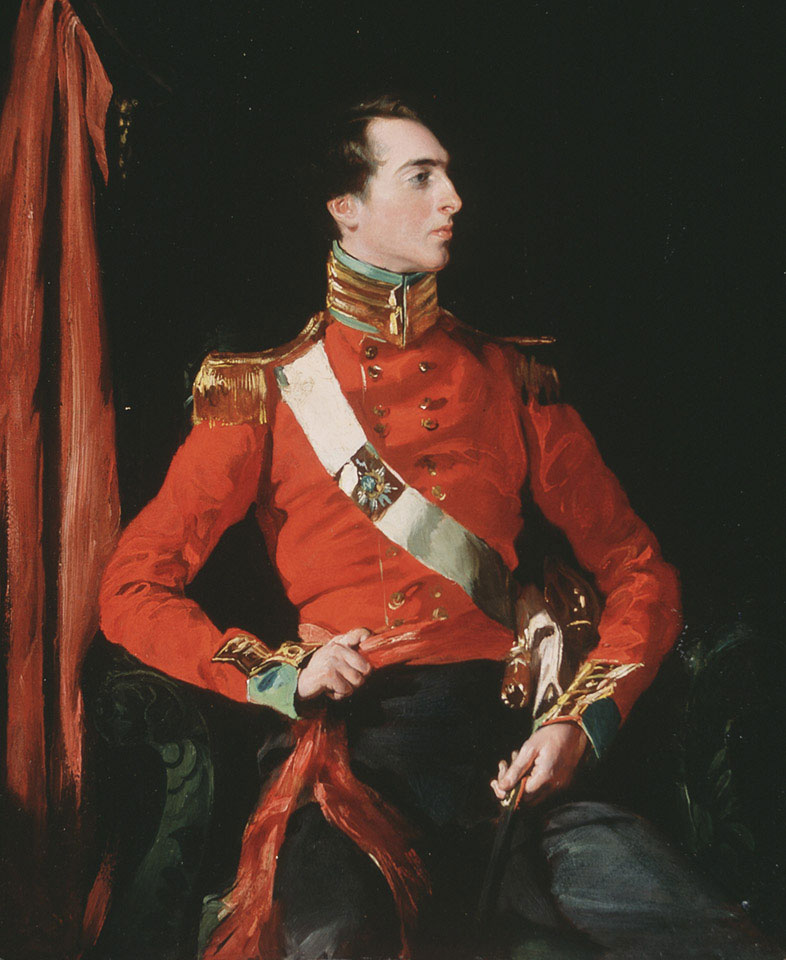
Captain Robert Henry Mockler, 44th (Bengal) Native Infantry, Unknown Artists, c. 1841; Acc No- NAM. 1979-01-84-1; Source- National Army Museum Sandhurst, Indian Army Memorial Room, Source
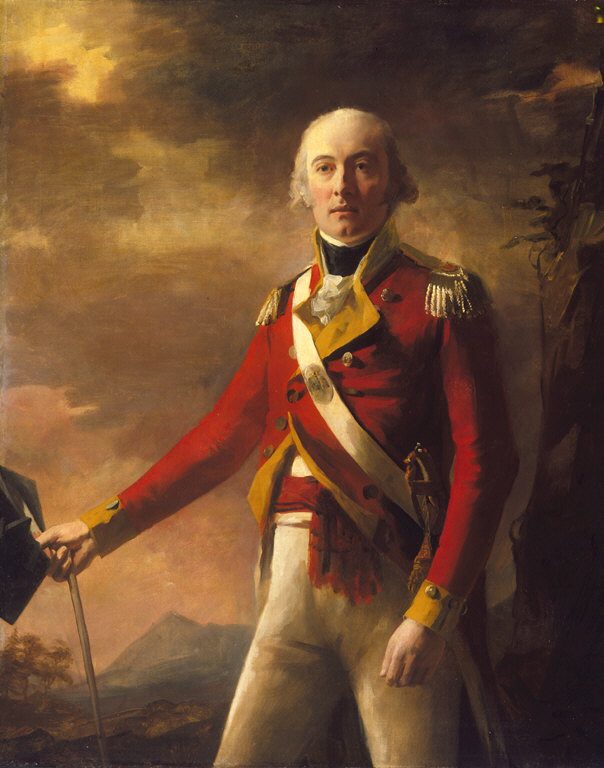
Major General Andrew Hay by Sir Henry Raeburn, c. 1811; Acc No: G.52.15.1; Source: Gift of John Hay Whitney to the North Carolina Museum of Art, Source
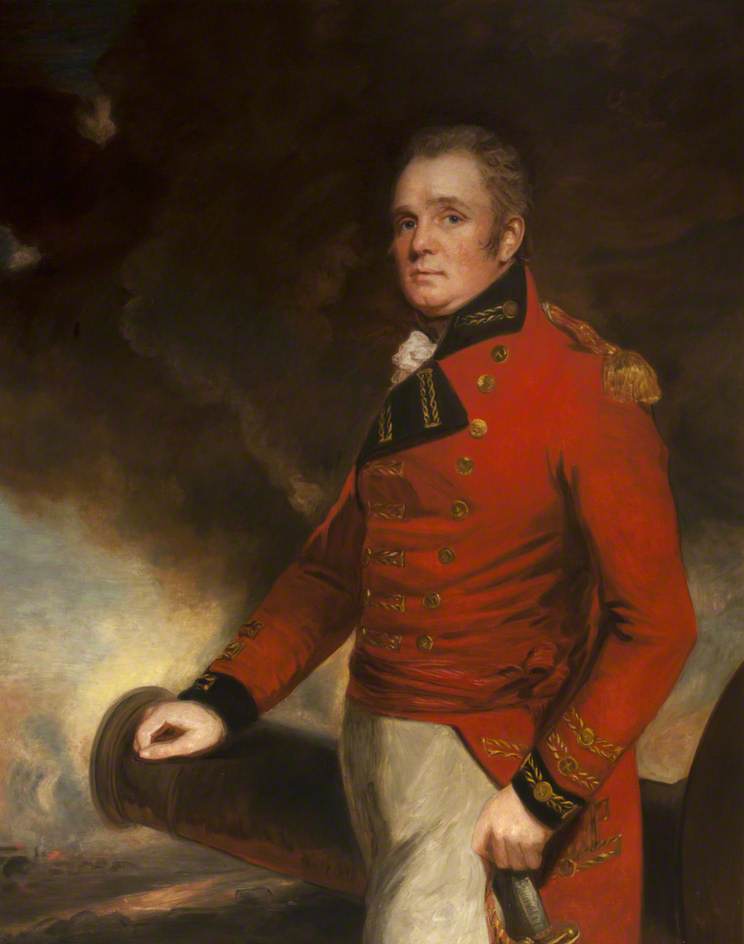
Hoppner, John; Lieutenant General Sir Thomas Maitland (1759-1824); Thirlestane Castle Trust, Source
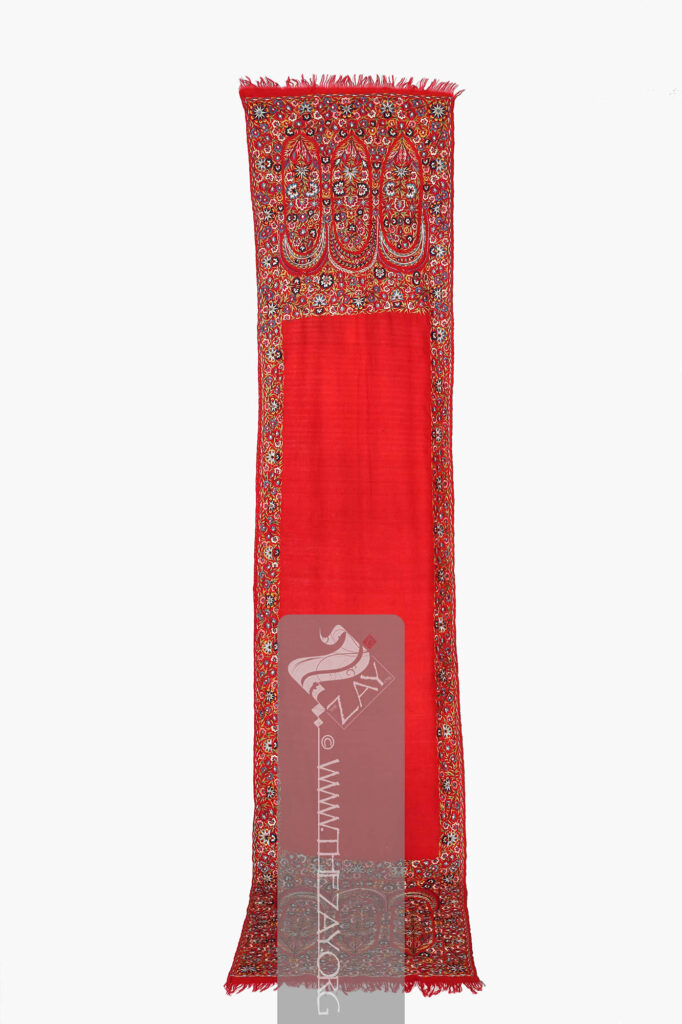
A Delhi Stole, “Silk Narrow Embroidered Stole”, India/Indian subcontinent, c. 1830; Acc No: ZI 2020.500754ASIA; Source: The Zay Initiative
As women’s fashion changed between c. 1860-70, long-flowing skirts that paired well with shawls gave way to bustled crinolines that could eventually be paired with capes and jackets. The shawl industry in Europe as well as the subcontinent suffered a major setback. This change in fashion coupled with the Franco-Prussian War disrupted the trade between Europe and India making the original pieces from Kashmir far more expensive than usual resulting in the loss of the patronage of the aristocracy. With high fashion losing interest, even the demand for the jacquard woven fabric produced in bulk for the fashion of the masses dropped with shawl makers suffering exponential losses. To keep themselves afloat, local manufacturers of Great Britain started producing machine-woven printed fabrics at lower rates as a last-ditch effort to keep work going. Many manufacturers left for the Americas in search of greener pastures ironically ringing the final death knell for what was once a thriving industry at the height of the Industrial Revolution.
The saga of systematic exploitation by the “Original Corporate Raiders” – as put by the Guardian.
The history of the Kashmir shawls in Europe is a complex one, marked by both admiration and success as well as exploitation and damage. While the Europeans appreciated the beauty and quality of these shawls, their demand for them and overconsumption had negatively impacted both the environment and the people of Kashmir.
The requirement of down fleece of the changthangi goat led to the unmitigated hunting of the species leading to the depletion of the animal’s population. The exploitation of local artisans was systematic. The shawls and their craft were commodified by mass producing it in the local markets of Europe and then the cheapened product was sold back in the Indian subcontinent to undercut the originals in value thus depreciating the value of the originals and depriving the local artisans of the price for their labour and skill.
The true potential of a hero
However, despite its downfall in the West, the craft and the product survived well beyond the colonial era. It remained an indispensable item in the winter wardrobe of the population across the subcontinent and retained its original respect as an item of luxury amongst both the affluent and the middle class alike. Several economic reforms since 1947 – after the end of the colonial era in the Indian subcontinent – which subsequently resulted in the exponential increase in wealth in the region have helped revive the craft and develop it further. Despite the current political volatility in the Kashmir Valley, the craft is enjoying a life with renewed vigour.

